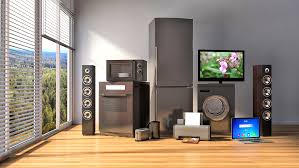
From the moment we wake up until we go back to bed, household appliances and devices make our daily lives more comfortable and convenient. From coffee makers to air conditioners, refrigerators to televisions, these gadgets have become essential in our homes. However, did you know that they also impact your energy consumption? The reactive power and power factor of your appliances can affect your electricity bills and even the efficiency of your home’s electrical system. In this blog post, we’ll delve into how household appliances and devices affect reactive power and power factors, as well as tips on how to mitigate their impact for a more sustainable future. So sit back, relax (with an energy-efficient appliance!), and let’s get started!
What Is Reactive Power And Power Factor?

Reactive power is a type of electrical power that doesn’t actually perform any work but rather flows back and forth between the source of electricity and the appliance. It’s caused by reactive components in circuits, such as capacitors and inductors.
Power factor refers to the ratio of real (useful) power to apparent (total) power. In other words, it measures how efficiently an appliance uses electricity to perform its intended function. A higher power factor means that an appliance is using more of the supplied energy for useful work.
Low reactive power and high power factors are desirable because they reduce overall energy consumption while increasing efficiency. However, household appliances often have low or even negative (leading) power factors due to their reliance on motors, compressors, and other equipment that causes reactive currents.
Understanding reactive power and power factor is essential for managing your home’s energy use effectively. By taking steps to improve these values in your appliances, you can save money on your electricity bills and reduce your environmental impact all at once!
How Do Appliances And Devices Impact Reactive Power And Power Factors?

Appliances and devices impact reactive power and power factor by drawing in both active and reactive energy from the grid. Reactive energy is the energy that flows back and forth between the appliance or device, causing voltage drops, line losses, and increased system inefficiencies. This results in higher electricity bills for consumers.
The impact of appliances on reactive power depends on their design, construction, age, usage patterns as well as load consumption rates. For instance, older appliances may have a lower efficiency rate than newer ones which can lead to more significant impacts on both reactive power and power factor.
Household devices like refrigerators, and air conditioners with compressors are known for consuming more power during start-up which can cause significant voltage fluctuations leading to poor quality of electrical supply distributed across the network.
Additionally, electronic equipment such as computers also contributes to creating harmonics and distortion within the electric system that further affect its overall efficiency.
Therefore it is essential to choose high-efficiency appliances designed with improved technology features that produce less harmonic pollution while reducing idle loads when not in use.
What Are Some Ways To Mitigate The Impact Of Appliances And Devices On Reactive Power And Power Factor?

There are various ways to mitigate the impact of household appliances and devices on reactive power and power factor. One effective strategy is to use power factor correction capacitors. These devices help in improving the overall efficiency of electrical systems by reducing the amount of reactive power needed for operation.
Another technique is to implement load balancing, which involves distributing loads evenly across all the phases of a circuit. This can be achieved through proper wiring and installation practices.
Furthermore, using high-efficiency appliances that consume less energy can significantly reduce their impact on reactive power and power factor. It’s also important to conduct regular maintenance checks and repairs as necessary, to ensure that appliances operate at optimal levels without drawing excessive amounts of reactive current.
Educating consumers about energy conservation practices such as turning off appliances when not in use or using them during off-peak hours can further reduce their impact on electricity usage. By implementing these strategies, households can effectively manage their energy consumption while minimizing any negative effects on reactive power and power factor.
Conclusion
Household appliances and devices play a significant role in our lives, but they also have an impact on the reactive power and power factor of our electrical systems. As we have seen, some appliances and devices can cause voltage drops or spikes due to their high level of reactive power.
However, there are ways to mitigate the impact of these appliances and devices on reactive power and power factor. One way is by using energy-efficient appliances that use less electricity overall. Another way is by using capacitors or other equipment to help balance out the reactive power in your electrical system.
By taking steps to reduce the impact of household appliances and devices on your electrical system’s reactive power and power factor, you can save money on your energy bills while also reducing wear and tear on your electronics. So next time you’re shopping for new home appliances or considering upgrading your existing ones, be sure to keep these factors in mind!

